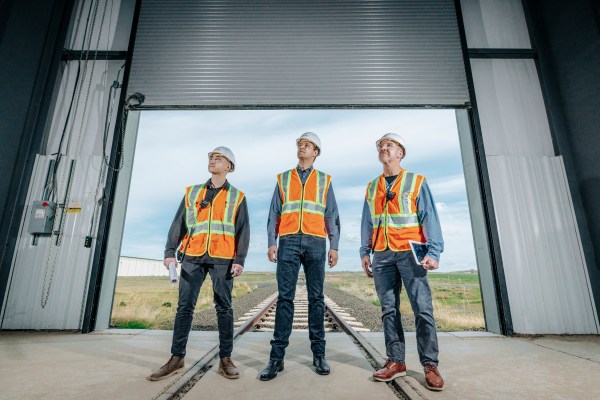Battery technology company Sila announced the purchase of a new facility in Washington state that will see its next-generation battery chemistry in hundreds of thousands of electric vehicles by the end of 2026, according to the company.
The 600,000-square-foot factory in Moses Lake, Washington, will start producing automotive-scale quantities of Sila’s battery tech by the second half of 2024, with full production underway in early 2025, the company said on Tuesday. It will serve existing joint ventures with automakers like BMW and Daimler, as well as other partnerships that Sila has not publicly named, according to Gene Berdichevsky, Sila’s founder and CEO.
Sila’s battery chemistry replaces the graphite in a battery cell’s anode with silicon to create a cheaper and more energy-dense battery pack, the company said. The new Washington facility, which is powered by hydropower, will be able to deliver 10 gigawatt-hours (GWh) of capacity annually when used as a full graphite replacement, or 50 GWh when used as a partial replacement. That’s enough material to power batteries in up to 100,000 to 500,000 premium electric vehicles and 500 million mobile phones annually, Sila said.
The news comes a day after the Biden administration announced $3.1 billion toward supporting the domestic production of batteries for electric vehicles. A Sila spokesperson told TechCrunch the company is currently reviewing the Department of Energy funds announcement and will likely apply, assuming Sila meets the eligibility requirements.
While the Washington facility will also produce batteries for consumer electronics, Sila has been working to bring its battery chemistry to electric vehicles for over a decade, and it’s finally getting close. (Berdichevsky was the seventh employee at Tesla, where he was one of the first to put a lithium-ion battery into an internal combustion engine vehicle.) Berdichevsky estimates Sila’s technology will make it to EVs anywhere from the end of 2025 to the end of 2026, depending on how long it takes automakers to validate the new tech, a process that can take anywhere from six to 18 months.
Last September, Sila commercialized its next-gen chemistry recipe for the first time, scaling it beyond pilot quantities so that it could appear in Whoop’s new wearable fitness tracker. At the time, Sila told TechCrunch it would need to scale 100 times further to have enough material to deploy in cars, hence the new factory.
“Each [of the two] production line[s] on this new plant will be about 100 times the throughput of the existing production line we have in Alameda,” Berdichevsky told TechCrunch. Sila’s Alameda production line can produce 15 megawatt hours of capacity. “It’s a huge step up and allows us to get to auto scale. The second phase will consist of a fully expanded plant at 150 GWh and that will represent a blueprint for a world-scale plant that we plan to build first in the U.S., and then copy in Europe and Asia in the future.”
The Washington plant, which property records show is located at 3741 Road N NE, is going to cost Sila “several hundreds of millions of dollars,” according to Berdichevsky, which would have been funded in large part by the company’s $560 million Series F last January, which brought Sila’s total funding to around $880 million. Scaling from 10 GWh to 150 GWH will require $1 billion to $2 billion, the executive estimated.
Given the demand for batteries in the U.S. and the fact that presently Asia, specifically China, owns the majority of battery material development and production, finding the capital might not be a problem for Sila.
“The demand for batteries that we’re going to have by the end of the decade, only about 5% of that capacity exists here domestically,” said Berdichevsky. “So you can either look at this as a huge problem, or you can look at it as a massive opportunity. And you either get behind this opportunity or get left behind.”
“The narrative in many ways has been that the U.S. is a laggard in energy and energy transition, and I actually think that’s not correct,” continued Berdichevsky, noting the range of innovation that has come out of U.S. companies, from the sheer existence of Tesla to solar energy ingenuity and fuel cell breakthroughs. “There’s a huge amount of innovation, but the part where we haven’t done as well is manufacturing. Sila has been an example of that same kind of innovation, except now we’re taking it to the second step and focusing on manufacturing domestically.”
